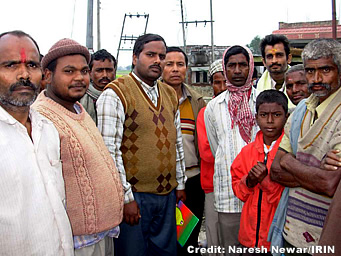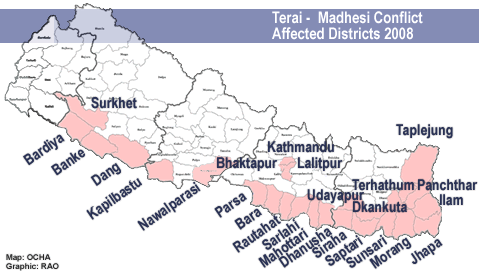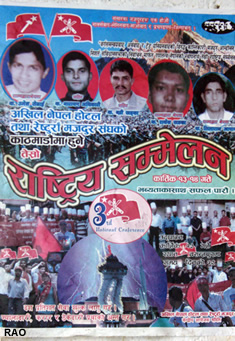Key points: - Curfew declared in five districts - Explosions cause damage in state offices - Clashes between security forces and protesters result in death, injuries - Food and fuel supplies dwindling - UN, I/NGO programmes suspended in several districts - Education services affected and schools closed - Sub-health posts functions impaired, District Health facilities operating - Government offices targeted, many closed - Humanitarian and Development actors face access challenges CONTEXT
In eastern Nepal, the Federal Limbuwan State Council continued with their strike, demanding release of activists who had been arrested. On 18 February, Tamsiling State Council, a group previously associated with the CPN-Maoist, called an indefinite bandh in the northern districts of the Central Region. This bandh was reported to be effective in Ramechhap, Rasuwa and Kavre districts. Bandh/strikes have affected many sectors adversely and led to closure of most offices, including those of I/NGOs in the affected districts. Security
Curfews were lifted briefly in some of these districts, but as of 22 February, remained in place most of the day in Nepalgunj (Banke district) and Biratnagar (Morang district). In Dhanusha district, the election office was burnt down on 20 February. In Sunsari district, a pressure cooker bomb exploded at the District Administration Offices (DAO), partially damaging the offices and forcing the DAO office to be relocated. On 20 February, the UN Office of the High Commissioner for Human Rights (OHCHR) issued a press release calling on all sides in the Terai protest to end violence and excessive use of force. The press release urged the Nepal police and Armed Police Force ( APF) to exercise restraint in response to protests but also called upon the protesting groups to use only peaceful means. Citing examples of excessive use of force and live ammunition after the declaration of a curfew in Nepalgunj when one person was shot dead and 11 hospitalised, OHCHR called upon the police to avoid using firearms in non-life threatening situations. The press release further deplored numerous incidents where both protestors and the police have attacked journalists. United Nations Department of Safety and Security (UNDSS) has directed UN agencies to limit their movement in affected areas to essential missions only. A number of UN and I/NGO offices remain closed in areas where the curfew was declared, with many staff working from home. Humanitarian Access On 19 February, following the vandalizing of a Red Cross Ambulance while taking injured people to hospital and the manhandling of the Red Cross first aid teams attending to the injured people in Mahotari and Dhanusha districts, the International Committee of the Red Cross (ICRC) issued a press release calling upon demonstrators and security personnel to respect medical personnel and transportation means at all times and to allow medical staff, ambulances and humanitarian workers to carry out their tasks during strikes and demonstrations. In Biratnagar on 19 February, youths opposed to an ongoing protest verbally and physically threatened four OHCHR staff members who were monitoring the situation and threatened to damage an OHCHR vehicle. Police deployed nearby when the incident occurred failed to intervene. As a consequence of these threats, human rights defenders, including OHCHR, were unable to effectively monitor the events. On
two occasions UN vehicles have been struck by rocks during demonstrations
and at roadblocks.
Food Increasing fuel prices, fuel shortages and transportation strikes coupled with a ban on export of non-basmati rice put in place by India a few months ago, are already showing their impact on the food security situation across Nepal, including the seven refugee camps that require approximately 400MT of food per week. The World Food Programme (WFP) reported that due to the strike, it was becoming extremely difficult to ensure that Bhutanese refugees in camps in Jhapa district receive their complete food baskets on time. In a number of Hill districts, basic food, fresh fruits and vegetables are becoming scarce in areas where these items are not locally produced. In Eastern Region's hill district of Ilam and Terhathum, shortage of essential food supplies like rice and cooking oil was reported as markets remained closed. Prices of vegetables have increased due to the rise in transportation costs and shortages. In Kathmandu the fruit and vegetable markets are only receiving about one third of the normal daily requirement for fruit and vegetables. The impact of the strike on food supplies was reportedly being felt in Dailekh and Rukum districts. Closure of markets in Bardiya, Banke and Dang since 13 February has also broken the supply chain and led to shortage of some essential commodities in these districts. Water The water situation in major urban centres outside the Terai had been problematic even before the strike. The imposition of electricity load shedding for eight hours per day in Kathmandu and other irregular electricity disruptions has made the situation worse. The Nepal Drinking Water Corporation had only been able to supply one quarter of the city's water requirements and this situation has now been further exacerbated by the general strike. Some water suppliers have been making deliveries during the early mornings and evening times; however this has become increasingly difficult due to the ongoing transportation difficulties. Many private water distributors are either not operating regularly or are closed due to power and diesel shortages. Water prices have increased due to increased demand and increased transportation costs. Health A number of districts where the bandh is effective reported that there was no scarcity of medical personnel or medicine at district headquarters. Similarly, the outpatients department of major health outlets in most districts remained open except Dhanusha and Mahottari where demonstrators are reported to have locked out health personnel from their offices since 17 February. Further reports indicate that except for emergency units, there is a significant decrease in the number of patients accessing major health facilities in the affected districts. Reports indicate that available medical personnel were not able to visit a number of health posts and health facilities outside the affected district headquarters due to transport problems. Medical supplies and delivery of heath services to these outlets could be seriously affected if the strike continues. A number of health programmes, including a health camp organised by UNFPA targeting 250 patients in Saptari district, was called off due to the strike. Education According to UNICEF, the strike has seriously affected educational institutions across the country. In Eastern region, most schools and other educational institutions have remained closed since 13 February in Morang, Sunsari, Saptari, Siraha, Jhapa, Udaypur and Terhathum. Only the majority of schools in Ilam district are reportedly functioning. In Central Region, the Terai districts were the most affected, but a number of hill district educational institutions that rely on public transport, including Kathmandu based schools faced difficulties in running education programmes due to fuel shortages. In Mid Western Region, Nepalgunj of Banke District has been most affected, with schools remaining closed due to curfew which has only been intermittently been lifted since 17 February. Transportation/ fuel shortage Transport services continued to be disrupted in almost all the 20 Terai districts and a number of hill districts for both public and private vehicles. The general strike has resulted in almost no vehicle movement in most parts of the country except Kathmandu with private entrepreneurs generally choosing not to travel due to fear of retaliation or fuel shortage. On a number of occasions demonstrators have burnt or vandalized public buses, milk trucks and private vehicles that have ventured on to the major highways. The government provide police escort to a number of fuel tankers transporting fuel from Birgunj in Parsa district to Kathmandu. Shortages of gas, including cooking fuel and kerosene for lanterns, continue to be reported in many districts across the country. In Kathmandu taxis, tempos, buses and privately owned motor cycles have not been operating due to severe shortage of fuel, instead spending the several hours in long lines in fuel outlets in different parts of the town. Public transport is difficult to find with the numbers of taxis, tempos and public buses either off the road or in lung queues at gas stations. The information in this report is consolidated from media, UN, NGO, and other humanitarian partners. This report is subject to availability of data.
Copyright © UN Office for the Coordination of Humanitarian Affairs OCHA 2008
|







